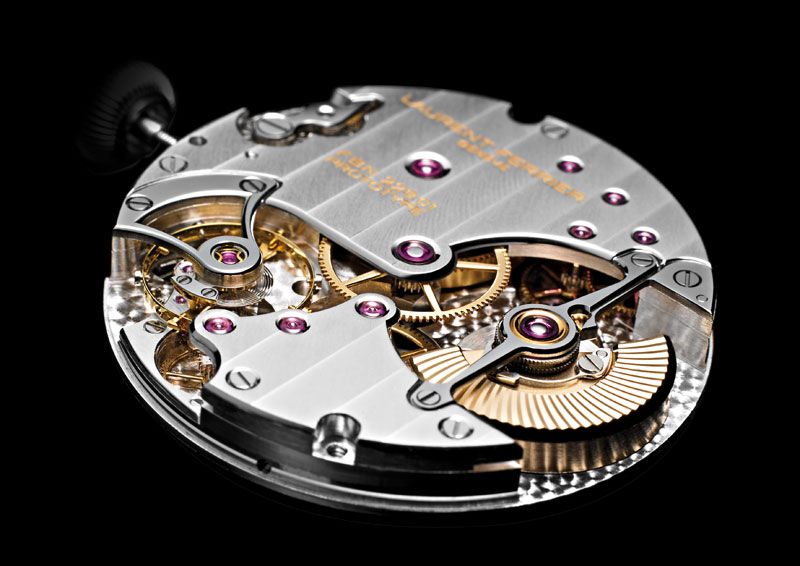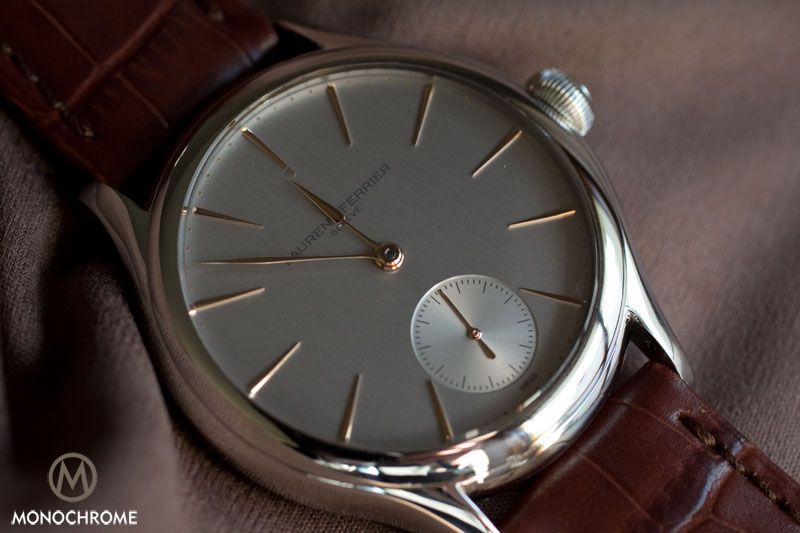Laurent Ferrier Galet Micro-Rotor explained and a new prototype

Last year we started with the Laurent Ferrier Tourbillon Double Spiral as our first Weekly Watch Photo and now we’d love to show you a limited edition Tourbillon Double Spiral and news about improvements on the movement of the Galet Micro Rotor.
As a special order for a customer, Laurent Ferrier made a version of the Tourbillon Double Spiral in red gold with applied red gold Roman numerals. Instead of the white enamel dial or the black onyx dial, this limited edition features a slate grey dial. In 2010 Laurent Ferrier was awarded Best Men’s Watch in the Grand Prix d’Horlogerie de Genève.

After a special version of the Tourbillon Double Spiral, the Tourbillon Double Spiral Secret, that was launched end of 2010, an entirely new model was launched at the beginning of 2011. This new version was the Galet Micro-Rotor and offers an automatic movement with a micro rotor as power source.
The case features the same aesthetics as the case of the Tourbillon Double Spiral, and also shares the same ball-shaped winding-crown and ‘assegai-shaped’ hour and minute hands, and a baton-type seconds hand. The case of the Galet Micro-Rotor measures 40 mm in diameter and is 10.7 mm thick.

The difference (at least visually) is the dial. No white enamel or black onyx dial, but the Galet Micro-Rotor is available with a silver or slate grey dial, adorned with a vertical satin-brushed finish and applied hour indices . All together an incredibly elegant and understated chic, classic dress watch. In my opinion its design is a perfect contrast with what’s ‘under the hood’. There we find a beautifully crafted and technically very interesting mechanical movement.
Let first take a look at the movement and its intricate beauty. The finishing of the movement is done in the finest watchmaking traditions, by hand of course!
- Bridges are finished with Côtes de Genève stripes
- Mainplate is finished with circular graining
- Flanks of bridges are beveled
- Wheel spokes are beveled
- Screw heads are polished
- Interior angles of the balance cock are beveled and polished
- Micro-rotor bridge is bevelend and polished
The movement is wound with a micro-rotor, something valued by connoisseurs, because it makes it possible to reduce the thickness of the movement. Usually a micro-rotor is less efficient when it comes to winding and on average, a micro-rotor needs twice as much rotations (300 vs. 150) for one complete turn of the ratchet wheel. This is because a micro-rotor has a lower inertia than a full rotor. Laurent Ferrier found the solution in increasing the efficiency of the the escapement by one third and thus his micro-rotor needs only 200 rotation for a full turn of the ratchet wheel.

How did Laurent Ferrier increase the efficiency in the escapement?
One of the methods (yes one, read on to see more methods) was to give a double direct impulse on the balance. To keep the escapement from wear, it was made of silicon. Because of the double direct impulse direct on the balance, Laurent Ferrier was able to reduce the moment of couple (or torque) required to wind the mainspring and hence optimizes the movement winding.
What is a “double direct impulse on the balance”?
The idea is that this escapement can give two impulses per oscillation (1 oscillation = 2 vibrations), twice as much as a normal lever escapement. This means that the movement’s frequency of 3Hz (21,600 vph) allows to impulse the balance 21,600 times per hour.
Here’s a metaphor to explain the double direct impulse by comparing it with a swing. With a detent escapement you push the swing once and you wait until it bounces back to give it the next impulse. With the double direct impulse escapement you push the swing and another person opposite pushes it back on his side.
Another way to improve the efficiency in the movement, and make it possible that this micro-rotor needs only 200 rotations in comparison to other micro-rotors that need 300 rotations, is an efficient winding system where the ‘noisy’ ball-bearing system has been replaced by a more traditional horological mechanism with pawls. The micro-rotor is fitted with a unidirectional-winding gold oscillating weight.
=> Did you know that an oscillating weight that winds unidirectional, is more efficient than an oscillating weight that winds bi-directional.
The winding rotor is fixed directly between the mainplate and its micro-rotor bridge, in order to ensure maximum stability compared with a conventional micro-rotor. Furthermore the shock protection system uses the principle of the silent bloc: the micro rotor is mounted on its axis between two O-rings. Also the winding of main spring barrel is optimized in the same way, however it is mounted on rubies. Because of all these efficiency measures, the manually wound movement has a power reserve of 80 hours.

When I visited Laurent Ferrier in his atelier in Geneva recently, he showed me a prototype with a silver dial with vertical satin-brushed finish and red gold hour markers and hands. It looks great, giving the watch an extra classic touch. What do you think?
The Galet Micro-Rotor is available in white or red gold for a price of 49’000 CHF.
More information can be found via the Laurent Ferrier website.



